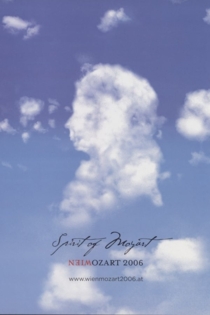
Michaela Schwentner
2021The Mozart Minute
Michaela Schwentner, Michael Glawogger
Twenty-eight well-known filmmakers living and working in Austria were invited by WIENER MOZARTJAHR 2006, to produce associative miniatures on Mozart. Requirement: they had to be one-minute artistic short films. The directors come from a whole range of different backgrounds, ranging from animated, experimental and short film to documentaries and feature films. The result is a multi-facetted sampler of diverse formal and contextual positions with regard to Mozart’s person and his influence on today’s society, art and culture. The contributions run the gamut from experimental-conceptual statements through socio-critical and documentary observations to pithy short feature films.
The Mozart Minute

Bellevue
Michaela Schwentner
Snow, fog, clouds—and in the midst of it all, a barely perceptible massif. Or, better yet, a white noise from which contours gradually emerge and just as steadily dissolve back into: As though ghost lights in the digital image-fog that dominates the expanse of this composition. A mountain peak, only vaguely discernible for the longest time, that halfway disappears again the moment it appears.
Bellevue

Zwischen mir und der Welt / Aufräumen
Michaela Schwentner
Set theory, one of the cornerstones of mathematics, serves as a metaphor for “social structures as spatial arrangement”, as the first sequence of the film reveals. The visual playfulness first becomes an exploration of two- and three-dimensionality and then turns out to be a well-founded reflection of social power relations. The search for a supposedly correct “order of things” triggers the compulsive element in many viewers. Who’s (not) afraid of being different?
Zwischen mir und der Welt / Aufräumen

transistor
Michaela Schwentner
transistor shows an excellent model for a direct coupling of sound and image. Accompanied by short, choppy segments of noise fragments, geometric gridworks appear with equal abruptness, as in a visual staccato: empty picture frames, lines and planes in varying intensities, light, semi-light, bold, extra-bold, etc. This not only places a visual matrix underneath the rasping, eruptive sound as a foundation, it also reveals the underlying matrix-like quality, the locking function in the digital culture as the interface at which graphic and acoustic elements have always overlapped. If structural film traditionally proceeded from the assumption that the visible world could be reduced to a geometric and conceptual image, Schwentner re-contextualizes such reduction processes: A kind of a dynamic structural model of an electronic culture which is crossing the genre is made visible. (Christian Höller)
transistor
